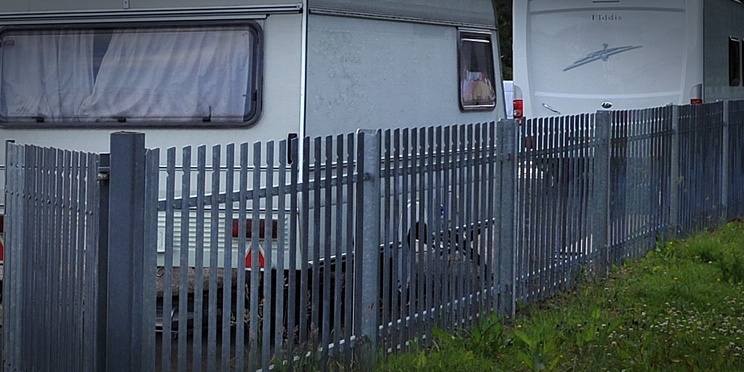A Fife councillor has called for tougher action to be taken against illegal and costly travelling people encampments.
Dave Dempsey has called for an investigation into the ”non-use” of the 1865 Trespass Act over unauthorised encampments after travellers pitched up at the Ingenico site in Dalgety Bay, part of his ward.
”Again and again we see local businesses put to huge cost and inconvenience because someone decides to park caravans on their land,” he said.
”Apart from the disproportionate cost of obtaining an interdict to move the intruders on, there’s the constant danger to reputation and business.
”What is a prospective client going to think if they visit and find the car park turned into a camp site?”
Mr Dempsey said whenever such an incident occurs the owners have to go to court.
”It’s popularly believed there’s no crime of trespass in Scotland, yet there exists the Trespass (Scotland) Act 1865 ‘to provide for the better prevention of trespass in Scotland’.
”At first glance, this act seems to apply to unauthorised encampments. If so, why isn’t it applied?” asked the Conservative councillor.
As a first step, the councillor has asked Fife Council’s legal services department to explain the act.
”If, as I suspect, it’s relevant, I’ll then be asking the police about the rumour that top police officers have decided not to apply it to travellers in general, and gypsy travellers in particular, for fear of being accused of race discrimination.
”I have no problem with gypsy travellers being classified as an ethnic group. I have no problem with their customs being respected and protected within reason.
”I also have no problem with encampments on private land where the landowner doesn’t object and I have no time for those bigots who automatically assume that all travellers are up to no good.
”However, events like those in Dalgety Bay show something’s not right, that the pendulum has swung too far and needs to be brought back to the middle.”
The council’s legal services managing solicitor Susan Mackessack admitted the law for dealing with unauthorised encampments is complicated.
”While action can be taken, it must always be considered against the Scottish Government policy on non-harassment of gypsy travellers.
”In relation to unauthorised encampments on council land, the law in Scotland allows the council, in defined circumstances, to seek a court decree for eviction of the occupiers with due notice served by sheriff officers.
”The legal situation in Scotland for unauthorised encampments on private land is more restricted than in England and Wales and makes it difficult for the council to intervene on behalf of private landowners.”
She added the act made unauthorised encampment a criminal offence in Scotland in certain circumstances.
A Fife Police spokesman said: ”Our guidance was compiled after extensive consultation and recognises the sensitivities of issues which arise from such sites, both from the point of view of gypsy travellers and from local residents.
”We will investigate all reported disorder and criminality and deal with them appropriately.”
